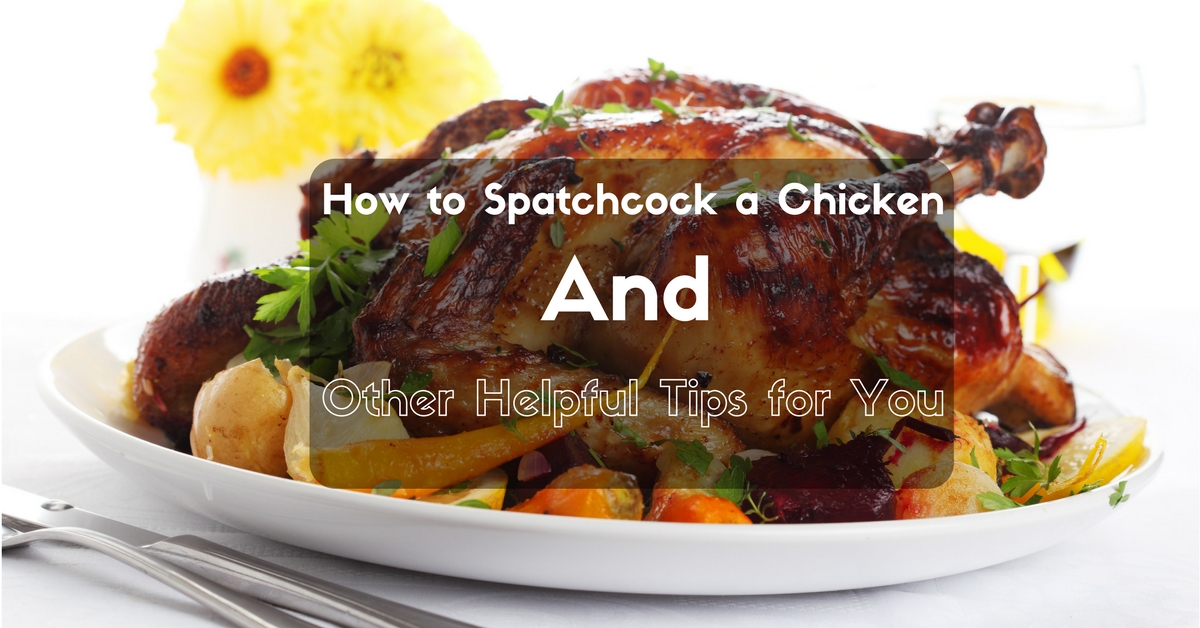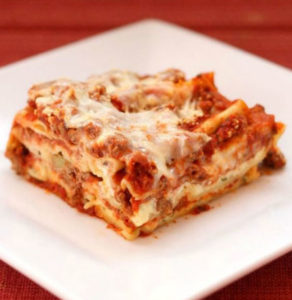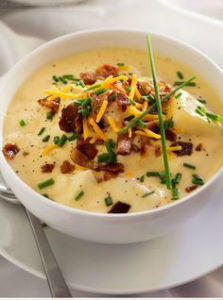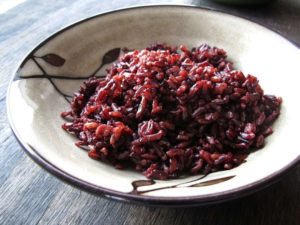In some countries, it is a typical scene to see roasted pigs on special occasions. Buying roasted pig will quite cost you some money so most people chose to make their own version of a roasted pig on a spit. Though it completes a celebration, roasting a pig on a spit is usually a tedious and time-consuming task. But once you have mastered the basics, it will all be worth it. The crispy skin, juiciness and delightful taste of the roasted pig will make you crave more.
Weeks ahead of your celebration, you must already set your action plans. Before planning, you have to make sure where you are going to roast. It should be in an open space outdoors where it could be safe to create a pit of fire without worrying about the smoke.
More...
How to Roast a Pig on a Spit
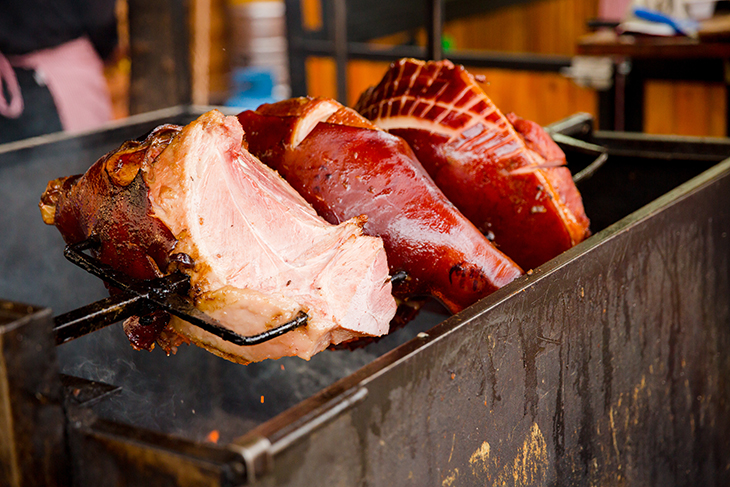
Pig roasts are a common tradition in several cultures, the way to bring friends and neighbors along for food and fun. However, it takes a long time to slow-roast a pig, the occasion provides a chance for everybody to induce along for a full day of festivities. Preparing an entire hog isn't a simple deed. It needs meticulous training, patience, and a careful eye. It’s necessary that you simply take the proper steps to make sure every section of the training method is handled properly, which the meat you’re serving to your guests is safe to consume. Here’s a simple guide on how to roast a pig on a spit:
1. Building a Pit
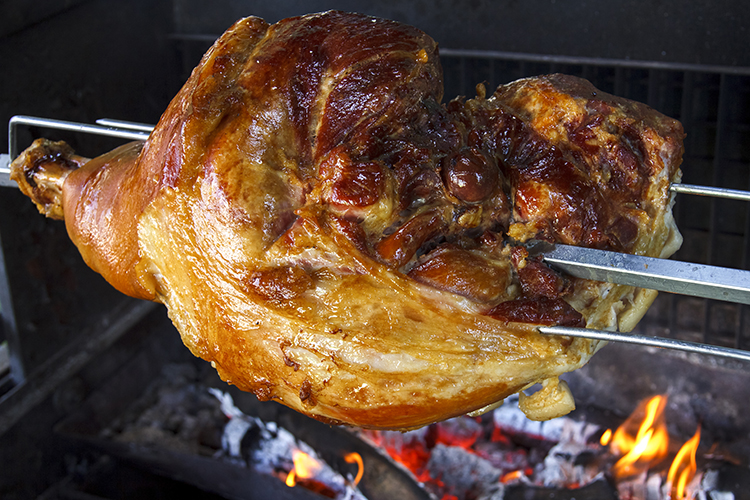
Make a bed for the coals. Look for a place where you'll be able to lay out a bed of coals which will function as the cookery pit. A flat, open house can work best. For best results, dig a shallow ditch and fill or ring it with gravel or flat stones of an even size, permitting home within the center for the wood you will be burning to provide the coals. You, furthermore, may have the choice of merely lining a flat patch of ground with stones so burning off the wood.
If you don’t have plenty of house to figure with or haven't any want to start out a fireplace directly in your yard, think about employing a metal clamshell grill to burn the wood. Setting up a cookery pit on the flat ground might injury any vegetation growing beneath wherever you lay out the stones. Place supports at the pinnacle and foot of inferno. Unless you have prepared the pit for roasting, you must handle the pig over the warmth once it’s time to induce preparation.
Situate these support materials on either facet of inferno lengthwise. Some folks make ‘Y’-shaped sticks that hold the spit in their crooks. Others opt to construct more elaborate setups with spare lumber or well-spaced cinderblocks. As long as the supports you build can hold the load of pig and spit, they’ll work simply fine. Make sure that you drive the wood support into the bottom part so that they’ll be firmly stock-still. Whatever you opt to use as your supports, they must be tall enough to carry the spit 1-2 feet (.30-.60m) over the fire.
Start a fireplace that you’ll use for preparation. Historically, slow cookery is needed with the use of wood coals. Gather the wood you’ll be utilizing to start out the fireplace.
The majority opts to use basic forms of wood that burn clean, like hardwood, or varieties like fruitwood that add flavor to the meat with their smoke. Organize the fuel on prime of the stones within the pit in tight clusters. Get a fireplace going and anticipate it to consume the wood and die down till solely glowing coals stay. Wood coals can burn at terribly high temperatures for a protracted period. Their constant heat can roast the pig at a time.
You will doubtless need five or a lot of bundles of wood to own enough to open up over the surface of the fire. You can supplement the wood coals with bagged coal if you decide on. This may keep the fire burning longer and build the warmth a lot of consistency. However, charcoal does not burn as clean as wood coals and should influence the flavor of the meat. Roasting an entire pig is an all-day event.
The fire has to be put off, hot enough for the warmth of the coals to penetrate into the meat of the pig, but not as hot as it cooks inconsistently or too quickly. The coals can have to be compelled to be raked and repositioned because the pig roasts to stay preparation temperatures even, and a lot of wood may have to be added once the fire begins to lose heat.
2. Preparing the Pig
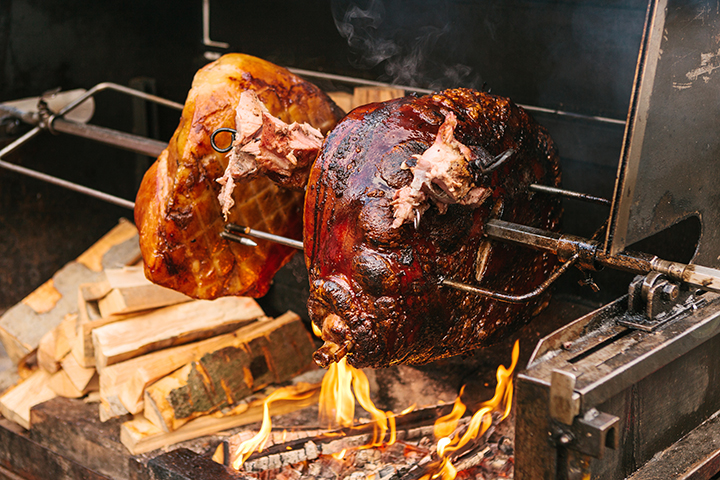
Get a pig that has already been dressed. Purchase your pig from a farm provider or butcher. If doable, have the butcher "dress" the pig and take away the organs and hard accent tissues before taking it home. The pig’s internal cavity ought to be wholly empty to raised conduct heat, or to permit you to stuff it do you have to want therefore. You’ll be ready to save money dressing it yourself; however, it'll add significantly to your task.
Pigs are available in totally different weights and sizes. Obviously, the larger the pig, the longer it'll go for the cook. If you don’t have all day to pay slow cookery or aren’t feeding as many folks, you can just buy.
Ask your butcher concerning the travel back home. They’ll usually be ready to provide zip-up baggage which will keep juices from obtaining everywhere your automobile and stop the meat from being exposed to the open air. If you’ve bought an entire frozen pig, it'll have to be compelled to be thawed before it is cooked. To thaw a frozen pig body, submerge it in an exceedingly light-weight ice tub and permit it to heat a bit by bit until the ice melts. This could take many days if the pig is big enough.
Clean the pig and rub it down with salt. Pig carcasses usually coated in dirt, fecal matter, and microorganism. Therefore it'll be necessary to wash the pig before preparing it. Wipe down the pig’s extremities and any incisions or openings created by the butcher with a cold, wet towel. If you’re operating outside, spraying the pig off with a hose will block on your school assignment time. Sprinkle the body generously with coarse salt and massage it into the skin. Do a similar for the inner cavity.
The pig can want an honest wiping down notwithstanding it's already been cleansed by the meat market wherever to procure it. Salt does not solely work as a seasoning, however, has antimicrobial properties which may kill lingering germs.
Add different spices, brines or marinades. At this time, you'll be able to season the pig more, if you want. Further spices like black pepper, cayenne, turmeric, paprika or flavoring are rubbed into the skin. Otherwise, you may inject a robust marinade or brine beneath the skin employing a meat contrivance. This may impart further flavor to the pig as it cooks. Don’t forget to zest up the pig’s inner cavity. Additionally, if it’s accessible by hand.
Try operating a specially amalgamated dry rub into the skin before preparation. Secure the pig to spit. To with success roast the pig over open heat, it'll have to be compelled to be mounted to spit—a long, straight pole that runs through a bit of meat being roasted whole. Spits are usually big, expensive and somewhat unwieldy, and aren’t the sort of issue the majority have lying around in their homes.
However, they will generally be rented from farms or ancient barbecue suppliers. You’ll be able to additionally purchase a durable metal rotisserie to induce the duty done, or fashion your own out of stripped and whittled wood. Guide the spit fastidiously through the rear gap of the pig and out through the mouth. This might need 2 to 3 persons to do it.
The spit ought to be long enough to get atop the supports at either finish of the fireplace and powerful sufficient to support a pig up to or over a hundred pounds (45kg). Tie the pig’s legs and area to the
3. Roasting the Pig
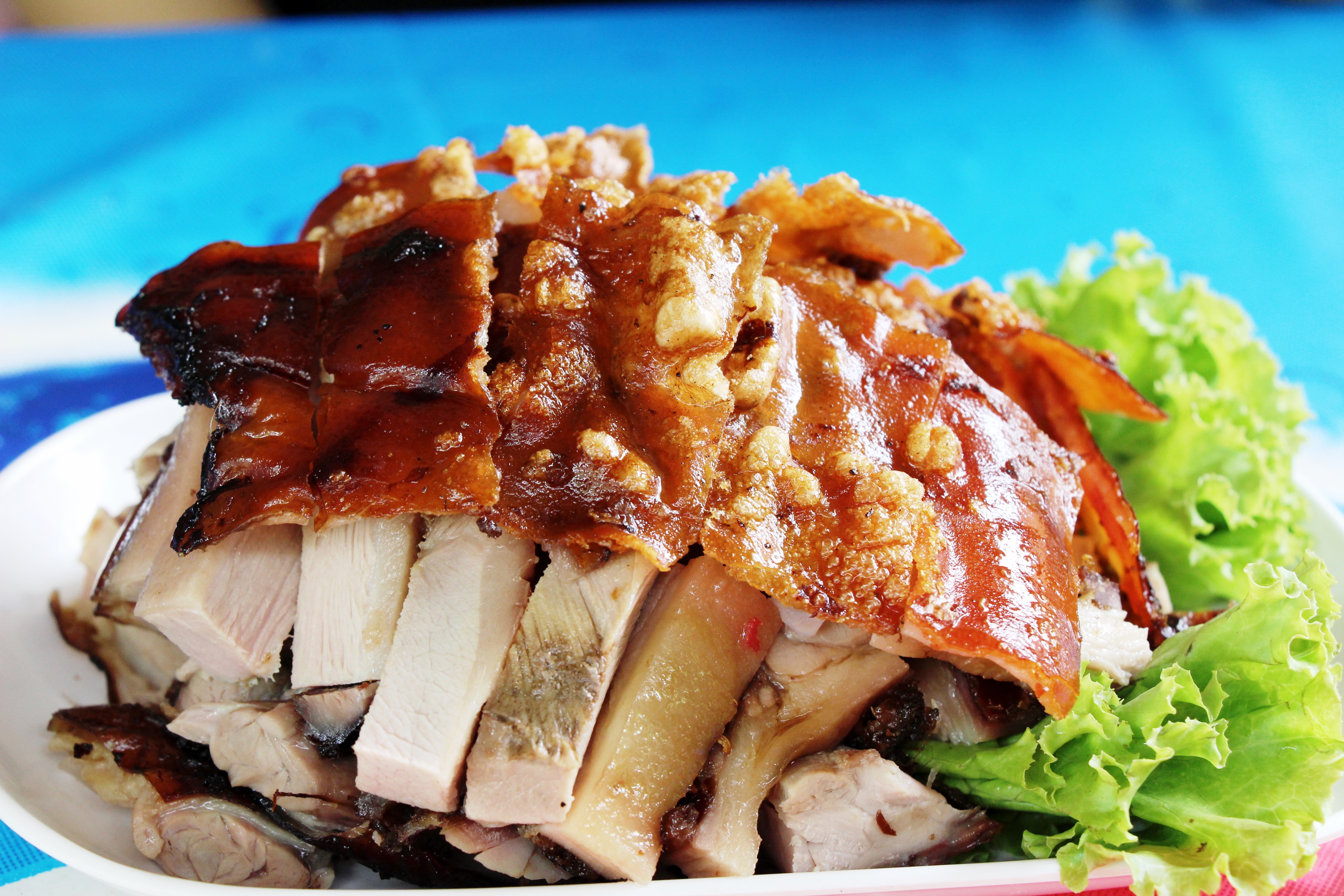
roasted pig is tasty on dish with sauce
Hoist the pig onto the supports on either facet of the fire. Once the pig has been secured to the spit, raise and place it on the supports to rest it on it. The pig ought to be focused and suspended roughly about 1-2 feet (.30-.60m) on top of the coals. Any nearer and therefore the heat might cause the skin to scorch.
Certify the spit doesn’t slide or move around when it’s been mounted. Make sure you have got facilitate or wood support in order for the pig to be positioned over the coals. Allow the pig to cook for many hours on either side. Let the pig cook at a moderate distance from the coals.
One useful guideline to stay in mind is that the pig ought to cook one hour for each 10 pounds of its weight; for a pig of average size, 75-100 pounds (34-45 kg), this implies 4-6 hours on either side. At the halfway purpose, flip the pig over to start preparing the other facet. Keep in mind to keep the fire hot by adding a lot of wood provisionally and rake and reposition the coals.
”Slow and low” is what consultants advocate for the cookery of an entire pig. It’s time intense and demands constant attention, however, makes an excellent centerpiece for every day of preparation and coming together. Brush on a coating of sauce, or use a turkey baster to drench the pig in an exceedingly good marinade as it cooks. This may ratchet up the flavor and keep the skin crisp and juicy.
Take the pig’s temperature in multiple spots. Once the pig is nearing completion, its skin can begin to brown and bubble. The soft belly and bacon section should be best served at around 145°F (63°C), whereas harder, a lot of strong elements just like the shoulder and haunches can have to be compelled to be a minimum of 160-165°F (74°C) before they’re safe to eat. You will have to be force to take a temperature reading many times throughout the preparation method. Don’t serve the pig if any a part of the meat is below 145°F (63°C).
4. Carving and Serving the Roasted Pig
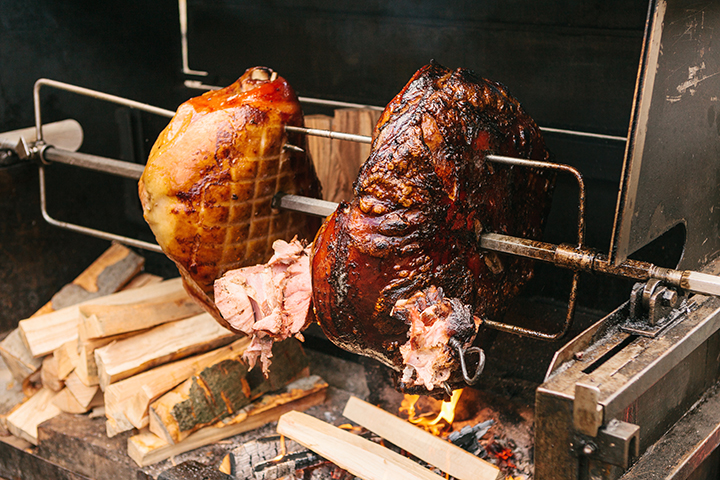
After 10-12 hours when the pig is currently a crisp brown, the internal temperature is right—it’s time to eat! Take the pig off the coals, take away the spit and tell everyone to dig in. you'll be able to carve the roast up into sections, dice it all at once like pulled-pork barbecue or have everybody take away their favorite parts by hand. Once roasted right, the meat ought to be tender enough to tug apart.
Spread the pork roast with your favorite sauce, serve it with some luxurious sides and enjoy! The meat ought to be juicy once soroughtly roasted but not bloody or red. If it isn’t quite done enough after you take it, it's going to want some a lot of minutes. Pair a roast pig with different yard picnic favorites like grilled veggies and baked beans, or select a lot of island-inspired flavors of untamed rice, cooked plantains and pineapple.
It Takes Time to Roast a Pig
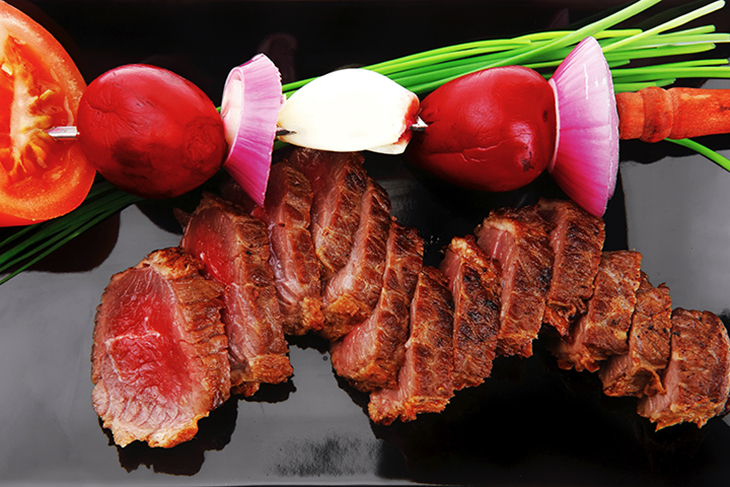
If you have never cooked a full pig before, remember that it's not a fast method. One issue you ought to never do is to rush the pig to be roasted. No one will tell you precisely however long it'll take your pig to be done. There square measure estimates which will facilitate however arrange on what happens once it's prepared some hours earlier or some hours later than you think that it'll be. A rule of thumb is that a one hundred pound (that’s live weight) pig on a spit might take 8-10 hours whereas constant size over slow coals will take over double as long. A pig roast within the ground will take twelve hours if done right and if it's crammed with fruits and vegetables it will take sixteen hours or longer.
Conclusion
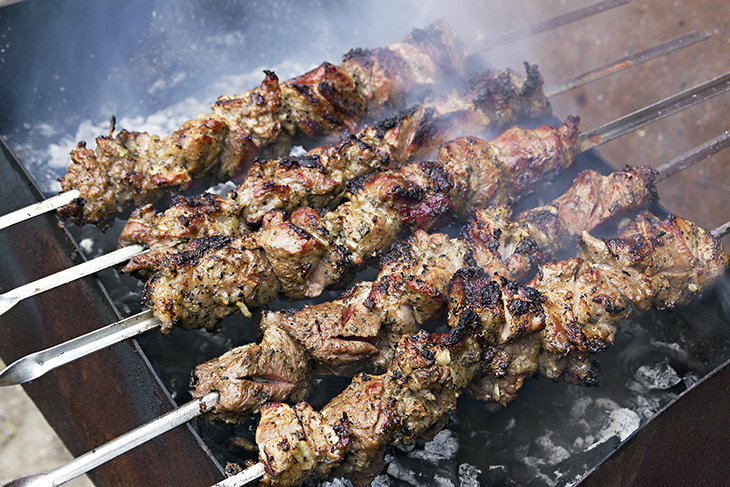
Depending on however the pig is being cooked and the way massive the pig is, can verify the time it takes to roast it. Don’t forget to require into the thought that once you take away the pig from the spit or grill, it'll still cook as you march it over to the serving table. Thus, don’t rush the setup once removing the pig from the heart. Some further minutes, whereas they put an apple in the mouth or put some decorations around it, can provide it time for the juices to settle and also the meat to become even a lot of tender.



